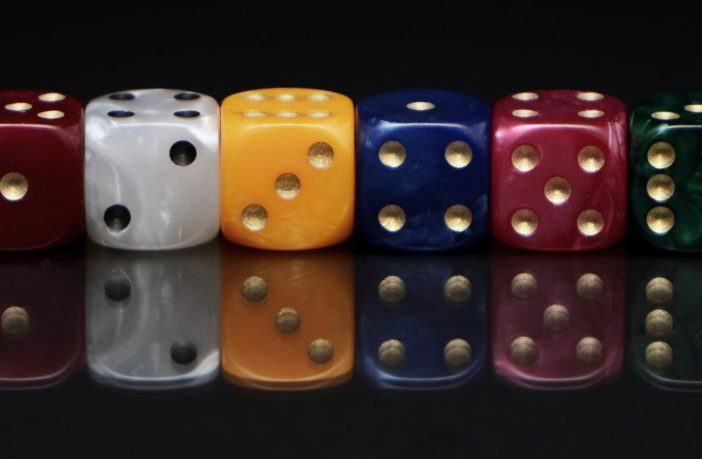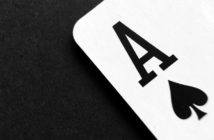Did you know that Craps has been around since the 12th century? Back then, it was a game you played on the streets. Because it involves only a pair of dice or pig knuckles, it’s easy to play anywhere.
Then, people called it Hazard. It later became Craps, from the French word “crapaud” for “toad.” This refers to how people sat when they played the game on the streets.
The modern Craps we know of today though was a version developed by John H. Winn in the 1900s. In this article, we’ll teach you how to play Craps that evolved from Winn’s version.
If you want to know how to play Craps for dummies, keep reading. We’ll dissect this game to show you how Craps for beginners works.
Your Invitation to the Best Online Pokies in Australia
Like a punt on the slot machines?
Our top rated slots for October 2019 are the smash-hit online pokie sites: Ruby Fortune and Jackpot City Casino.
These sites include some impressive matched bonuses – up to $750 and $1600 respectively! With the potential for some seriously big wins, here’s your chance to get a piece of the action:
Craps: The Basics
Some people think the rules of Craps are complex, but it’s only about the results of a pair of dice the players roll. If you think about it that way, the game becomes less complicated. It’s simple enough for people to keep playing, and the fact that it’s one of the highest paying games in casinos helps too.
Before we go into the basics of how to play Craps though, let’s talk about the table first. Make sure to remember the terms we introduce for later.
The table has several sections, including the pass line, don’t pass bar, come, and don’t come. There are also sections numbered 4 to 10 for the place bets and the field for field bets. You may also notice the numbers 6 and 8 on a different section.
Then, let’s talk about the people on the table. There’s the boxman, who’s responsible for overseeing the game and handling the money. In many casinos, there’s one boxman for one pair of tables.
There’s also a stickman, who uses a stick to move around the dice on the table. The dealers beside the stickman announce the results of the throw and manage the bets, collect chips, or pay out players based on the results.
The game can look complicated and intimidating because of this set-up. But we’ll explain in detail what all these terms mean.
How to Play Craps and Place Bets
The thing that complicates Craps is the numerous ways to place bets and the different payouts. All of them, though, rely on the results of the throw to determine whether you’ve won or not.
If you know all the ways to place bets, then you’re an expert on Craps. However, even if you only know one or two, you can still play, which is why it’s one of the most popular games in Australian casinos.
1. Pass Line and Don’t Pass Bets
The most common bet is the pass line, in which you place the bets before the initial come-out roll, which we’ll explain later. The general rule is that if you see the sign “OFF” on the table, that means you can place your bet.
The pass line bets are pretty straightforward; the payout is 1:1, and winning requires you to roll either a 7 or 11. You lose, however, if the sum of the pair of dice is equal to 2, 3, or 12.
If the results are anything else, that’s a point and your bets stay on the Pass Line.
When there’s a point, you win if the throw results in that number again. If it rolls a 7, though, the wager loses.
Note that if the roll establishes a point, your pass line or don’t pass bets stay on the table.
You can come out with winnings, no matter how small they may be, by only knowing this one rule. Nonetheless, you have to know other ways to place bets. You’ll have to know them all if you plan on going pro.
The don’t pass bets are the exact opposite; you’re betting on a 2 or 3 to pop up. You then lose if the results are 7 or 11. A 12 is a push, which means you neither win nor lose.
In the event of a point, you lose if the shooter manages to roll the point again and you win if it’s a 7.
These bets are the most recommended bets for your strategy that’ll let you walk away with profits.
2. Come and Don’t Come Bets
After the come-out roll and after the table establishes a point, that’s the time you can place come and don’t come bets. This means people can join the game even after the round has started, but they place these bets instead of the pass and don’t pass bets.
These are similar to pass and don’t pass bets in that winning or losing depends on whether the roll is a 7, 11, 2, 3, or 12. The table may also establish a point if the result is otherwise.
Note that the point after the come-out roll doesn’t affect your bets because they only apply to those who have pass line and don’t pass bets. If the shooter rolls the point again, you don’t win; rather, those who placed the pass bets win.
Likewise, if there’s a point and the first roll after you join is a 7, you win and the pass or don’t pass wagers lose.
If the first roll after you join the game is anything but a 7, 11, 2, 3, or 12, that’s your point. It only applies to come bets, so you win if it’s rolled again and lose if a 7 comes out.
In the same vein, don’t come bets are like don’t pass bets. You win if the result of the first throw is 2 or 3, but you lose if the result is a 7 or 11. If there’s a point, you win if the shooter rolls a 7 and lose if he/she rolls the point again.
3. Odds Bets
Odds bets are for the advanced players; you place them after the shooter establishes a point.
They complement your bets on the pass line, don’t pass, come, and don’t come, which means there are four types of odds bets. It’s called “taking the odds” if you place a bet on the point and “laying the odds” if you place a bet against it.
The way to win on an odd bet is to win your original bet, whether it’s a pass line, don’t pass, come, or don’t come.
The payouts vary depending on the point established. For pass line odds bets, the payout is 2:1 if the point is a 4 or 10. If it’s a 5 or 9, the payout is 3:2, and if the point is a 6 or 8, you get 6:5.
For don’t pass odds bets, the payouts are in reverse; they’re paid out 1:2 for 4 or 10, 2:3 for 5 or 9, and 5:6 for 6 or 8.
The come and don’t come odds bets operate in the same principles as the pass and don’t pass odds bets.
The advantage of odds bets is that there’s no house edge, so you get paid at true odds. This also means there’s a limit to the amount you can stake on your wager. In some casinos, you can only stake up to three times, but others may allow more.
4. Place to Win or Lose Bets
Place bets allow you to bet on a number between 4 and 10, which we call the place numbers. In essence, it’s like betting on a point, but you establish your own point. You’re betting that the shooter will roll the number you chose first before a 7.
The payouts also vary depending on the number you bet on. If you win with a 6 or 8, it has a payout of 7:6; these bets pay 7:5 on the number 5 or 9 and 9:5 on the number 4 or 10.
Another type of place bets, called place to lose bets, is the exact opposite. Like the don’t pass or don’t come bets, you win if the shooter rolls a 7 before your chosen number.
Again, the payouts vary; a 6 or 8 pays 4:5, a 5 or 9 pays 5:8, and 4 or 10 pays 5:11.
5. Buy and Lay Bets
Buy bets are like place bets; you bet on a specific number to roll before a 7. The only difference, however, is that you have to pay a 5% commission, which you pay when you place the stake or when you win.
They’re also like odds bets in terms of payouts, which means the payout is 6:5 if the shooter rolls a 6 or 8, 3:2 for 5 or 9, and 2:1 for 4 or 10.
Lay bets are like the place to lose bets with payouts like the payouts on the don’t pass odds bets. A 6 or 8 pays 5:6, 5 or 9 pays 2:3, and 4 or 10 pays 1:2.
6. Field Bets
Field bets are also popular because they’re always settled on the next roll; you place the bet before that.
If you look at the table, the field contains the numbers 2, 3, 4, 9, 10, 11, and 12; if the result of the next throw is any of these numbers, you win. But you lose if the roll is 5, 6, 7, and 8.
The payout is 1:1 on all of these numbers except 2 and 12, which have higher payouts. Some casinos pay 2:1 on both, while others pay 3:1 on one and then 2:1 on the other.
Don’t forget to collect any winnings because if you don’t, it means you’re letting it ride, which means putting your initial wager plus your winnings on the line.
7. Other Bets
The big 6 or 8 bets are pretty straightforward; you’re betting that a 6 or 8 comes out before a 7. Payout is 1:1; it’s simple enough to attract a lot of people but it has a house edge of 9.09%, so you may not want to play this all the time and for an extended period.
You may also bet on double numbers, which amounts to a hard number like 4, 6, 8, or 10. If your throw gives you either of the 2 + 2, 3 + 3, 4 + 4, and 5 + 5 dice combinations, this means you rolled it the “hard way.”
The payout depends on which hard number you bet on; a hard 6 or 8 pays 9:1 and a hard 4 and 10 pays 7:1.
Try Craps the Next Time You’re in the Casino
Our Craps for dummies guide should get you ready for the game next time you visit the casino. It’s pretty simple once you get the hang of it.
You should be aware of the superstitions of Craps players, though. Be respectful, don’t yell the word “seven,” don’t mind the lady throwing a penny under the table, and so on.
After learning how to play Craps, be sure to check out our casino etiquette guide next.







